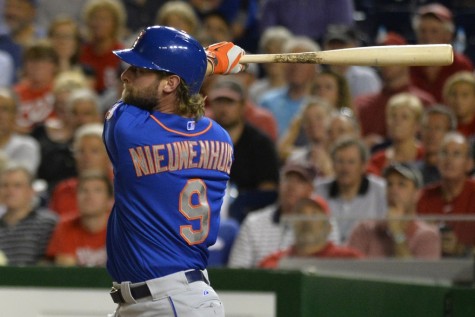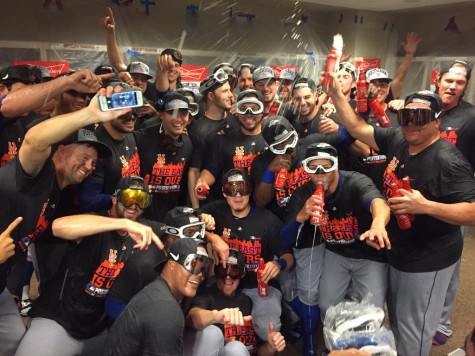
In what has truly been a team effort, the 2015 New York Mets were able to accomplish what few thought they could, and win the National League East Crown. Credit is rightly due to several players. Whether it is Curtis Granderson and his superior performance out of the leadoff spot, the historic run of the newly-added Yoenis Cespedes, Jeurys Familia and the exceptional job he has done after being forced into the closer’s role, or the consistent stellar starts from the Amazins’ young phenoms, this team has gotten positive contributions from all different areas.
It is remarkable how this team got to the top of the division. Most players’ stat sheets, especially the position players, do not exactly jump off the page. Lucas Duda and Daniel Murphy currently lead the team in RBI’s, with just 70. Only David Wright is hitting above .300 (and in just 140 at-bats). Yet, the team managed to comfortably capture the NL East because of balance throughout the lineup and players checking their egos and accepting a reduced role for the good of the team. Manager Terry Collins also deserves high praise for the team’s success and keeping the team together during the first four months of the season when the offense was dismal. We’ve given credit to plenty of individuals, but there are also some names that many fans have undoubtedly overlooked this year. Here, we acknowledge some of the more under-appreciated members of your 2015 National League East Champions.
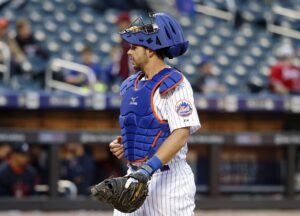
Early in the season, Travis d’Arnaud suffered a hand injury that forced him to miss nearly two months of action. Shortly after his return, d’Arnaud would suffer an elbow injury, causing him to miss more extended time. In his absence, rookie Kevin Plawecki would step into the starting catcher’s role. Plawecki was called up April 21, several weeks, at least, before the Mets were planning to call him up, and promptly delivered two hits in his Major League debut. Plawecki was thrust into a starting big league role before he was ready, but considering the circumstances, performed quite well. His .224 average won’t excite anybody, but his contribution goes deeper than just statistics. Plawecki managed to hold down the fort while playing the sport’s most difficult position before he had time to fully polish his skills in the minors. After a sluggish start, Plawecki’s bat started to come around, and he has shown at times why he was considered such a highly-touted prospect.
Plawecki also has handled the Mets’ young staff admirably. White it may be correlation rather than causation, Mets’ starters have performed better when Plawecki has been behind the plate. Plawecki also calls a terrific game and really has demonstrated a strong understanding of the pitching staff and knowledge of how to handle specific situations, something d’Arnaud has not yet mastered. Furthermore, Plawecki’s superior ability to frame pitches has gotten Mets’ pitchers dozens of strike calls on should-be balls (Plawecki at one point led MLB in this category). While Plawecki is not, and may never be, the hitter d’Arnaud is, he has done a solid job taking after being rushed into a significant Major League role.
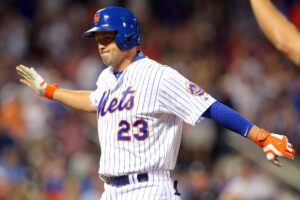
The Mets signed Cuddyer to a 2-year, $21 million deal in an otherwise uneventful offseason. Cuddyer, 36, was given the everyday left field job, but was overall disappointing in his first three and a half months in Flushing. Up until July 21, the last game he would play before going on the disabled list with a bone bruise in his knee, Cuddyer hit just .250/.303/.380 in 82 games (74 starts). Cuddyer’s underproduction angered Mets fans who began comparing the Cuddyer signing to the unmentionable Jason Bay acquisition back in 2010.
On August 11, Cuddyer was activated off the disabled list and has since been a different player, while embracing a more limited role. With the breakout of highly-anticipated rookie Michael Conforto earning the left field job against right-handed pitchers, Cuddyer has been limited to only starting against lefties and has excelled in those opportunities. Since his return, Cuddyer is batting .333/.378/.493 in 31 games, just 15 of which have been starts. Despite playing everyday for most of his career, Cuddyer has graciously accepted becoming a platoon player for the Mets. He has hit well in his newly-defined role and has provided a great example to his teammates on what it means to be a team-first player.
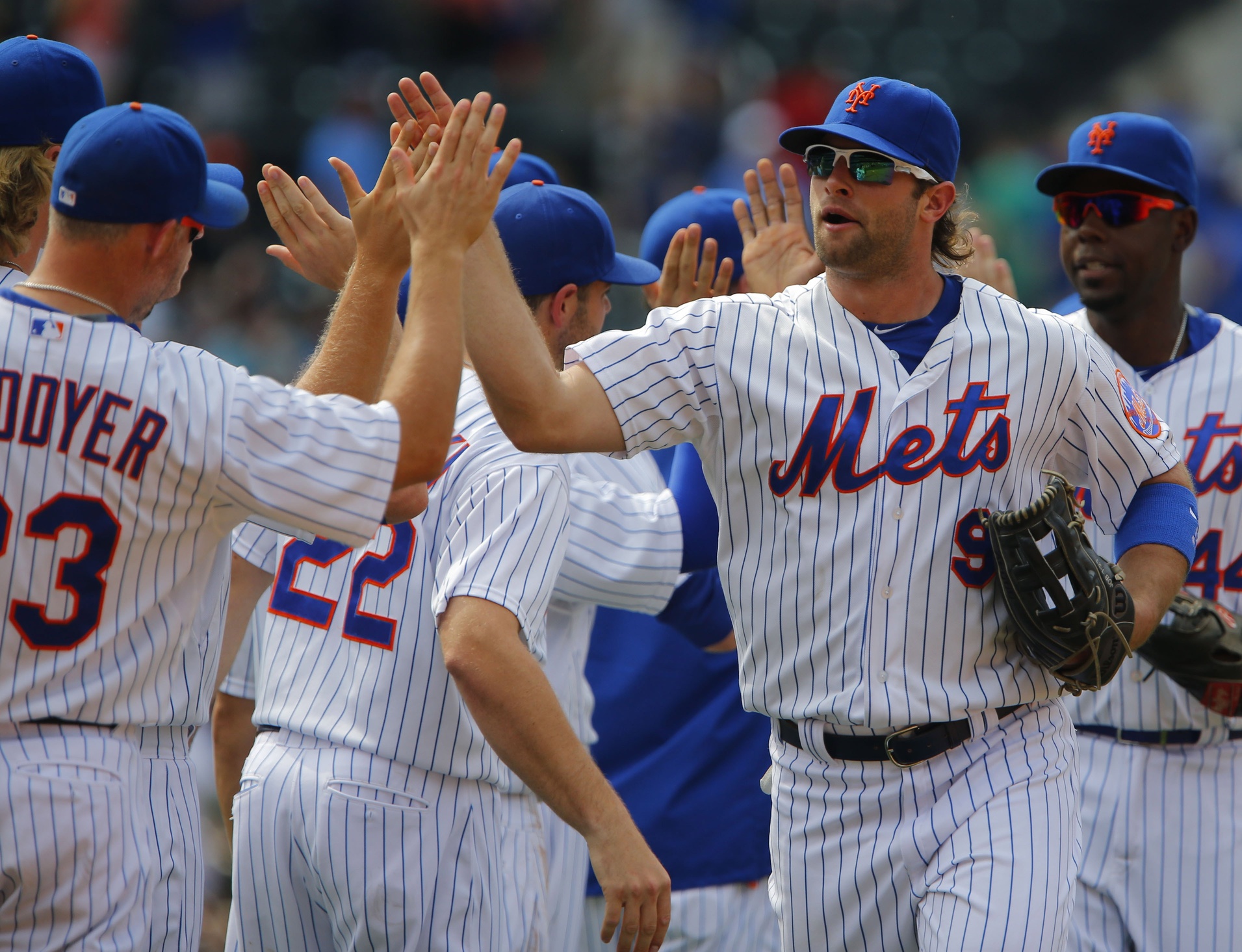
I have criticized Nieuwenhuis as much as anybody, but the man deserves credit for what he has done in his second stint with the Mets this season. Nieuwenhuis’ first go-round in 2015 for the Amazins was a disaster. He hit .079/.125/.132 with 17 strikeouts in 38 at-bats, before being placed on waivers and eventually getting traded to the Angels for cash in mid-May. Nieuwenhuis was subsequently let go by the Angels after just 10 unimpressive games when the Mets re-acquired him and sent him to Triple-A. The Mets called up Nieuwenhuis on July 6 for his second turn with the big league club, which would end up going infinitely better than his first one. In 33 games at the Major League level since the Mets reacquired him, Nieuwenhuis is hitting .271/.358/.559 with four home runs in 59 at-bats, reestablishing himself as a quality Major League bench player in the process.
Nieuwenhuis also provided two of the most special moments of the Mets’ 2015 season. On July 12, he became the first Met ever to hit three homers in a home game. On September 8, Nieuwenhuis’ go-ahead eighth inning home run against the Nationals capped an improbable six-run comeback in the second win of an eventual three-game sweep, which would put the Mets in the driver’s seat for the division title. Nieuwenhuis likely will not make the postseason roster, but the longtime Met deserves recognition for turning his year around and providing the team with some of the their biggest moments of the season.
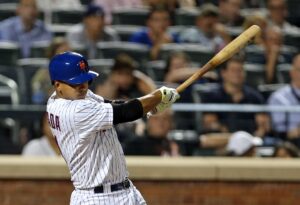
Tejada isn’t exactly the most beloved Met of all-time, but even the harshest of critics should acknowledge the steps forward he has taken in 2015. Tejada has played solid defense all year, while splitting time with Wilmer Flores at shortstop. Tejada has also put together a very respectable season at the plate. Following two disappointing seasons, Tejada’s 2015 slash of .267/.345/.358 is his best since 2012, with his .703 OPS being a career high. While he does not have enough at-bats to officially qualify, Tejada’s OPS and batting average would rank 7th and 6th, respectively, among all shortstops in baseball. Tejada has also shown good discipline at the plate recently. He’s been able to battle back after falling behind in counts, forcing long at-bats while often batting in front of the pitcher in the 8th spot. It is unclear how he would perform as a full-time shortstop, but Tejada has been solid in his more abbreviated role in 2015.

Erik Goeddel, Sean Gilmartin, and Hansel Robles
We all know the struggles of the Mets’ bullpen this season. Jeurys Familia has been tremendous all year as the closer, but the arms in front of him have been inconsistent. The Mets attempted to strengthen their bullpen by adding veterans Addison Reed and Tyler Clippard. After getting off to good starts as Mets, those two have struggled in recent weeks. However, there have been some (surprising) bright spots out of the ‘pen this, namely from three rookies who seemingly have come out of nowhere.
Erik Goeddel has amassed an impressive line consisting of a 2.56 ERA, 1.01 WHIP, 2.70 FIP, 30 strikeouts, and nine walks, but has been limited to just 31 2/3 innings while missing significant time with an elbow injury. Still, Goeddel has impressed in middle relief while developing a good splitter which can be very effective, especially against left-handed hitters. In fact, despite being right-handed, Goeddel has actually performed better against lefties (.194 BAA for LH batters compared .211 BAA for RH batters).
When the Mets picked up Sean Gilmartin in the rule 5 draft back in December, they probably didn’t believe they would get the type of production out of him that he’s given them so far. In 52 1/3 innings, Gilmartin sports a 2.58 ERA, 2.54 FIP, 51 strikeouts and 17 walks. He’s also shown an ability to pitch effectively for multiple innings per game, providing some much valuable long-relief capability. One thing Gilmartin, a lefty, lacks is an ability to consistently retire left-handed hitters (.272 BAA for LH batters vs. .214 BAA for RH batters). Still, Gilmartin has exceeded expectations and proven he belongs in a Major League bullpen.
Hansel Robles made his Major League debut against the Yankees on April 24 after being called up from Triple-A at a time the Mets were desperate for relief depth. Robles was not necessarily meant to stick around in the Majors all year, and did not get his big league career off to a great start. In fact, Robles’ ERA was over 5.00 as late as June 28. However, since July 1, Robles has been terrific. In 33 innings during that span, Robles has a 2.45 ERA, 42 strikeouts, nine walks, and a very impressive .165 BAA. After being cautious in the beginning of the season, Terry Collins has used Robles in more high-leverage spots in the middle and late innings, even using him in the 8th at times. Robles could be a key piece to the Mets playoff bullpen and will probably be the go-to arm out of the bullpen in crucial middle inning spots. He also can fill in the 7th and 8th innings if Reed and Clippard need rest or are ineffective. He just might need to watch his quick pitching before he ticks off the wrong guy.
This has been quite a year for the New York Mets. There are countless responsible for the team’s success, many of which nobody could have predicted would have made such a big impact. Here’s to a great year so far and hopefully there are many more champagne-soaked celebrations in the very near future.


